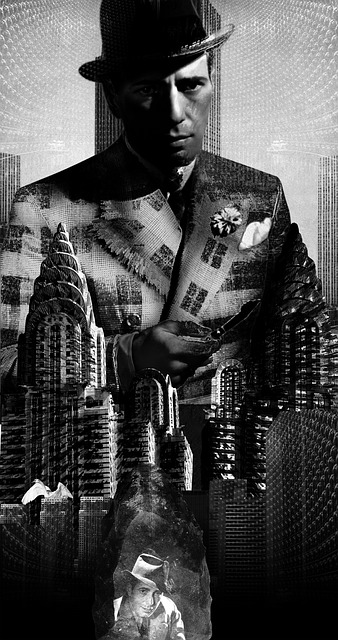Have you ever read a book or watched a movie and felt truly invested in the characters? That’s because they were likely complex characters—characters who have contradictory traits, are adaptable and exist beyond the basic protagonist-antagonist dynamic. But what exactly makes a character complex?
This blog post will discuss the complex character definition and some of the most memorable examples of it from literature and film. Let’s jump right into understanding these complicated personalities!
What makes a complex character unique and interesting

A complex character is also known as a dynamic or round character. A complex character is more than a hero, villain, or other basic archetype, in contrast to static characters (those whose personalities remain consistent throughout the story).
Complex characters have layers; they are multifaceted and unpredictable—they surprise the reader with unexpected actions and words. They feel real to the audience because of their human flaws, struggles, moral dilemmas, and internal contradictions.
Complex characters often don’t fit into a neat and tidy box; sometimes, they can even be morally ambiguous. They challenge the reader or viewer to think more deeply about their motivations and actions. These characters are complex because they defy stereotypes, keeping readers engaged in the story as they try to unravel its secrets.
Analyze the different components of character complexity
To truly understand a complex character, it’s important to look at all the different components that make them unique. These components include the character’s backstory, personality traits, behaviors, and motivations.
The backstory of a complex character is often full of surprises—every twist and turn in the past contributes to who they are in the present story. They often have a past that contains some trauma or conflict, and this can impact their current relationships and outlook on life.
When it comes to personality traits, complex characters usually have both positive and negative qualities—they can be generous one minute and selfish the next. These contrasting traits make them unpredictable, which keeps readers engaged in the story.
Here are some classic examples of complex characters and their impact on readers

– One of the most enduring examples of a complex character is Jay Gatsby from The Great Gatsby by F. Scott Fitzgerald. His backstory reveals that he was born into poverty, only to become wealthy later in life, and this motivates much of his behavior throughout the story. He’s generous and kind to those he loves, yet willing to break the law in order to achieve his goals. These contrasting traits make him a fascinating and compelling character, and his story has had a lasting impact on readers.dc
– Another classic example of a complex character is Severus Snape from the Harry Potter series. His backstory reveals that he was once in love with Lily Potter, which impacts much of his behavior throughout the series. He can be selfish and cruel at times, yet he also shows moments of kindness and compassion. His complex traits make him an intriguing character, and his story has resonated with readers for decades.
– In Stanley Kubrick’s film A Clockwork Orange, Alex represents a disturbingly amoral yet highly compelling anti-hero who commits violent acts without remorse until he eventually finds humanity within himself through self-reflection and moral growth. Along this journey, we learn about his complexity as a character and what it means to be human in today’s society—making this movie timelessly relevant even decades after its release date in 1971.
– Other examples of classic complex characters include Hester Prynne from The Scarlet Letter by Nathaniel Hawthorne; Holden Caulfield from The Catcher in the Rye by J. D. Salinger; Rhett Butler from Gone with the Wind by Margaret Mitchell; Donald Kimball from Seven (1995); and Tony Montana from Scarface (1983).
All these iconic characters show different shades depending on who they’re interacting with or what situation they find themselves in, which is why they remain so captivating decades after their first appearance!
Tips on how to create complex characters that engage readers

– When creating complex characters, strive for nuance and subtlety in their characterizations and avoid stereotypes or cliches.
– Start by considering the character’s inner life. What motivates them? What fears do they have? What are their hopes and dreams? This can provide valuable insight into who the character is and how they will act in certain situations.
– Also, research real-life examples of people with similar traits or backgrounds to your character—you may be surprised at what you learn! This can help make characters feel more three-dimensional and nuanced.
– A great way to make complex characters come alive on the page is through their words and actions. A character’s dialogue should be unique, and their behavior in certain situations should reflect their inner motivations. You should also focus on creating moments of tension or surprise—these will keep readers engaged in the story.
– Finally, don’t be afraid to take risks with your characters. Don’t be afraid to give them flaws or make them behave in unexpected ways—this is what will keep readers engaged and coming back for more!
By understanding the components of character complexity, examining classic examples, employing empathy when writing, and finding creative ways to make characters come alive, you can create complex characters that will captivate readers. By crafting multi-layered and unpredictable characters, you can create stories that will stay with readers for years.
Conclusion
Developing complex characters is an art, and it requires empathy. You must dig deep into their emotions to understand their characters’ motivations. It’s important to put yourself in your character’s shoes and understand why they make certain decisions or act certain ways. Whether it’s Jay Gatsby or Severus Snape, understanding the complexity of characters can help readers truly appreciate a work of literature or film in all its depth and nuance.
Unraveling the mystery of these complex characters is a rewarding experience for any reader! Give it all you have and then some more!
Thank you for taking the time to read. May you find success and joy in all that you create.
If you’re working on your first novel and are looking for more help with your writing, please check out my other articles at https://ullahakanson.com/blog/
Best of luck with your writing!
Ulla
www.ullahakanson.com

